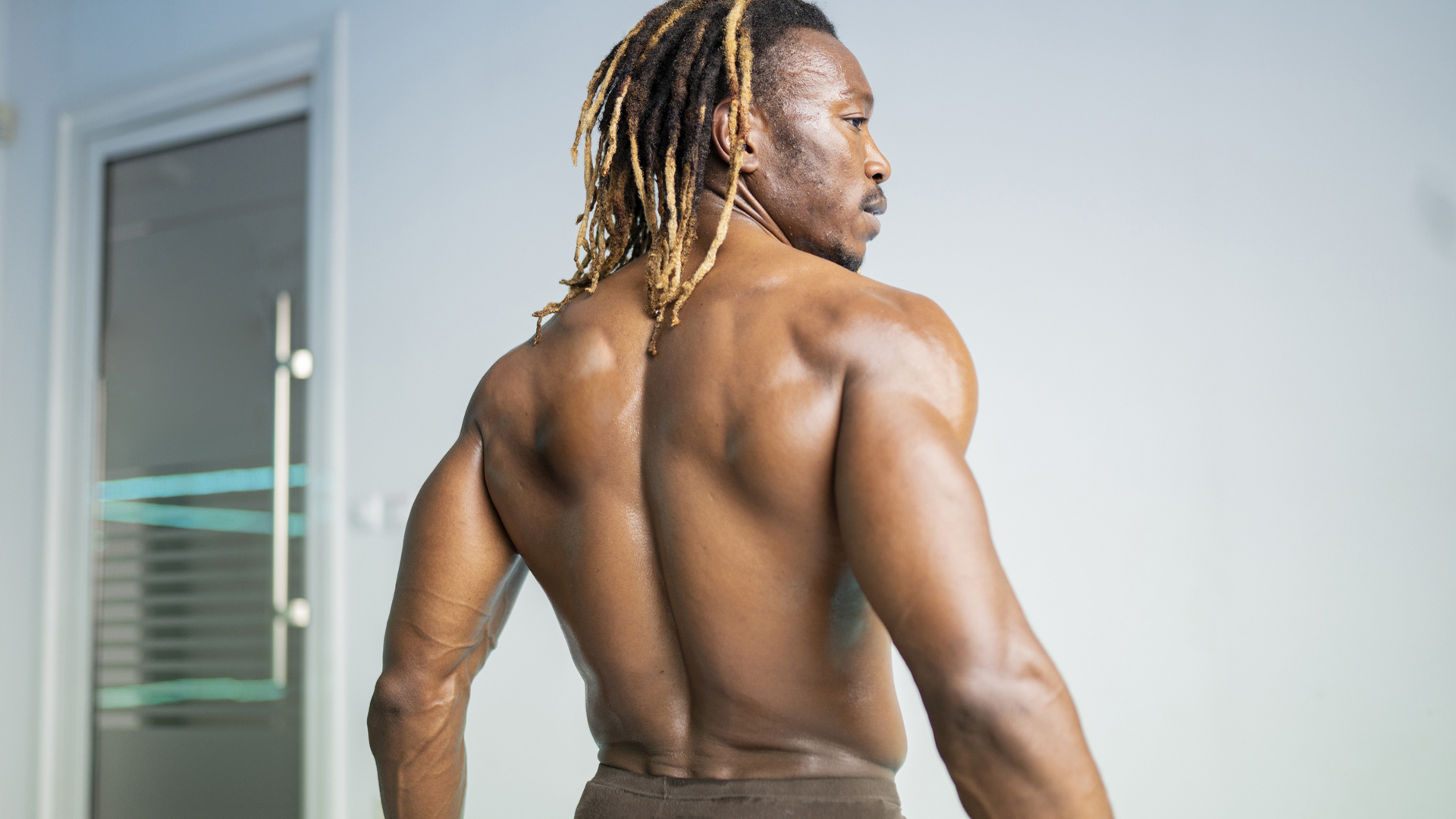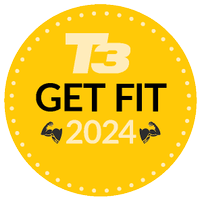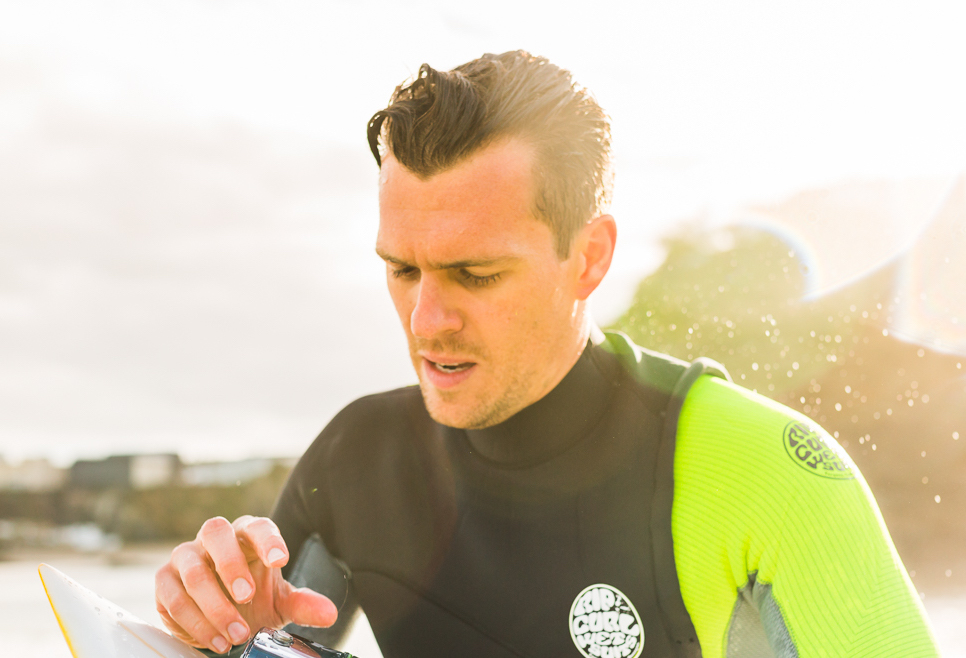


It is a problem many of us have faced: New Year, new workout plan, but progress is scuppered when we unintentionally tweak a muscle in the back as a result of poor exercise, lack of mobility, or generally going too hard, too soon.
"Back pain is the single leading cause of disability worldwide,” explains Victoria Anderson, Clinical Exercise Physiologist and Founder of Longevity Health & Fitness. “However, it is also a condition that specific rehabilitation and physical activity could benefit most from,” she adds.
In short, back pain doesn’t necessarily mean the end of your fitness journey, and conversely, adding in some specific exercises and stretches can not only promote back strength and mobility but also protect you from future issues.
“The majority of back pain is actually classified as non-specific low back pain. This means that it cannot be attributed to a structural issue or one specific diagnosis but rather an accumulation of things that could contribute, such as physical inactivity, sedentary behaviour, smoking, obesity, high stress at work and poor sleeping patterns,” Victoria explains.
Where most people tend to avoid physical activity when they are experiencing mild back pain or have a history of repeatedly injuring that area, exercise is actually one of the best ways to help ease the pain. Of course, if your back pain is severe, we suggest getting professional help before hitting the gym.
“Our bodies and joints thrive on movement and activity, so the chances are that gradually increasing activity, within limits of what feels manageable to you, will provide benefit,” Victoria adds.
“There’s no need to avoid lifting your shopping or reaching for objects. Instead, ensuring your body is conditioned to do those things is the best approach.”
Sign up to the T3 newsletter for smarter living straight to your inbox
Get all the latest news, reviews, deals and buying guides on gorgeous tech, home and active products from the T3 experts
With that in mind, we’ve asked Victoria to create a programme aimed specifically at increasing mobility and strengthening the back so it can cope with whatever you throw at it in 2024.
Daily tasks
First things first, it is worth building a healthy daily routine of mobility and light strength-building exercises to get you on track towards a strong and pain-free back. The exercises listed below are Victoria’s ‘go-to’ prescription for anyone with back pains and complaints.
Knee hugs
This can be performed anywhere around the house, so long as you have a soft and comfortable surface beneath your back. Simply pull both knees towards your chest until you feel a light stretch in the lower back, hold this position for 20-30 seconds, remembering to breathe in and out before slowly releasing. Repeat three to five times daily for great results.
Lumbar rotations
The knee hugs will have warmed up the lower back for some deeper stretching and mobility work. With your arms out to the side and knees and feet together, rock your knees slowly from one side to the other, attempting to get your knees closer to the ground with each gentle rocking motion. Again, this should be slow and controlled, and aim for five rotations on each side before resting and repeating for three to five sets.
Glute bridge
Weak glutes (your butt muscles) are a common cause of lower back pain, as the smaller and more vulnerable muscles in the lower back tend to take over the heavy lifting your more powerful glutes and leg muscles should be doing on a daily basis.
A glute bridge is the perfect way to start firing those glute muscles, increasing stability and building the core strength required to tackle a whole host of exercises.
Lie on your back and set the knees around shoulder width apart, soles of the feet flat on the ground. Engage your glutes by squeezing your butt muscles, and try to engage the core as you lift your hips as high as possible.
Hold at the top with everything squeezed tight for a few seconds and lower back down. That’s one rep. Aim to complete five to ten of those in a set and tackle three sets in total.
Bulletproof back workout
This workout is best performed in the gym, where you’ll have access to barbells, weights and cable machines, but you can also perform most of it at home with a set of dumbbells.
The idea is to build a solid foundation (abs, back and legs) for a pain-free exercise experience, particularly if you have previously suffered from back gripes. Avoid going heavy on the weight and build up very gradually, especially if you aren’t used to resistance training.
As a general rule, aim for around 10-15 repetitions of each exercise per set, and three to four sets before moving on to the next exercise. This can be adjusted as you move on to heavier weights, but it’s a good place to start. Look to add this workout into the routine at least twice a week to achieve the volume required to build muscle..
In addition to the workout, Victoria suggests you reduce periods of sitting during the week, whether that’s at a desk or in front of the TV. Try to stand or walk every hour. Walk for a minimum for 20-30 minutes a day, five days a week and get plenty of rest, aiming for a solid eight or nine hours of sleep each night.
Seated Cable Rows
This will require a cable machine, but it’s great exercise for engaging the back muscles, particularly for those new to resistance training, as it’s possible to start very light and work up. Make sure you have the right handle or attachment (a V-handle or two individual handles are both great) and perfect form, ensuring the back muscles are the dominant group, not the arms.
Deadlifts
Mastering the deadlift can take a lifetime in the gym, especially if you are looking to shift some serious weight, but it’s also a fantastic way to build a solid back and strong legs. Better still, it can be performed with higher reps and minimum weight, making it much safer on the back in general.
The video above is a great step-by-step tutorial on how to set up a barbell deadlift (remember, start light), but this exercise can also be performed with lighter dumbbells. There’s a great tutorial video for that here.
Squats
Those not comfortable with a full barbell back squat, as demonstrated in the video above, can begin with a supported version, using a chair or stable surface to assist at the very bottom of the movement.
It’s also possible to add dumbbells or any other form of weight to create resistance. But body weight is often enough for most to get started.
This exercise is absolutely brilliant for working the entire posterior chain, which comprises the muscles in the back, the glutes, hamstrings and spinal erector muscles - all hugely important in any daily lifting movement.
Reverse lunges
Again, this is another exercise that can be performed with a barbell, dumbbells, kettlebells or simply body weight. Victoria suggests that those suffering from lower back pain avoid stepping backwards with each rep, as this can place excessive stress on the lower back.
Instead, starting in a spilt squat stance and carrying out five to eight reps on each leg before swapping is a great way of building up to the full reverse lunge demonstrated in the video above.
Prone leg raises
This exercise is particularly focussed on the lower back muscles, and it doesn’t require any specialist equipment. It’s often prescribed by physios and can be performed right at the end of the workout as a good finisher or at any time during the day. Lie on your stomach and lift one leg at a time, squeezing the glutes and engaging the lower back muscles.
This feature is part of T3's Get Fit 2024 campaign. We’ll be bringing you a wealth of guides, features, deals and news to help you get healthy, fit and ready for anything the new year can throw at you. Whether you’re a newcomer to fitness or someone with a passion for it, we’ll bring you all the best workouts, diet advice and gear to set you on the right track.
Leon has been writing about automotive and consumer tech for longer than he cares to divulge. When he’s not testing the latest fitness wearable and action camera, he’s out in a shed fawning over his motorcycles or trying not to kill himself on a mountain bike/surfboard/other extreme thing. He's also a man who knows his tools, and he's provided much of T3's drills coverage over the years, all without injuring himself.